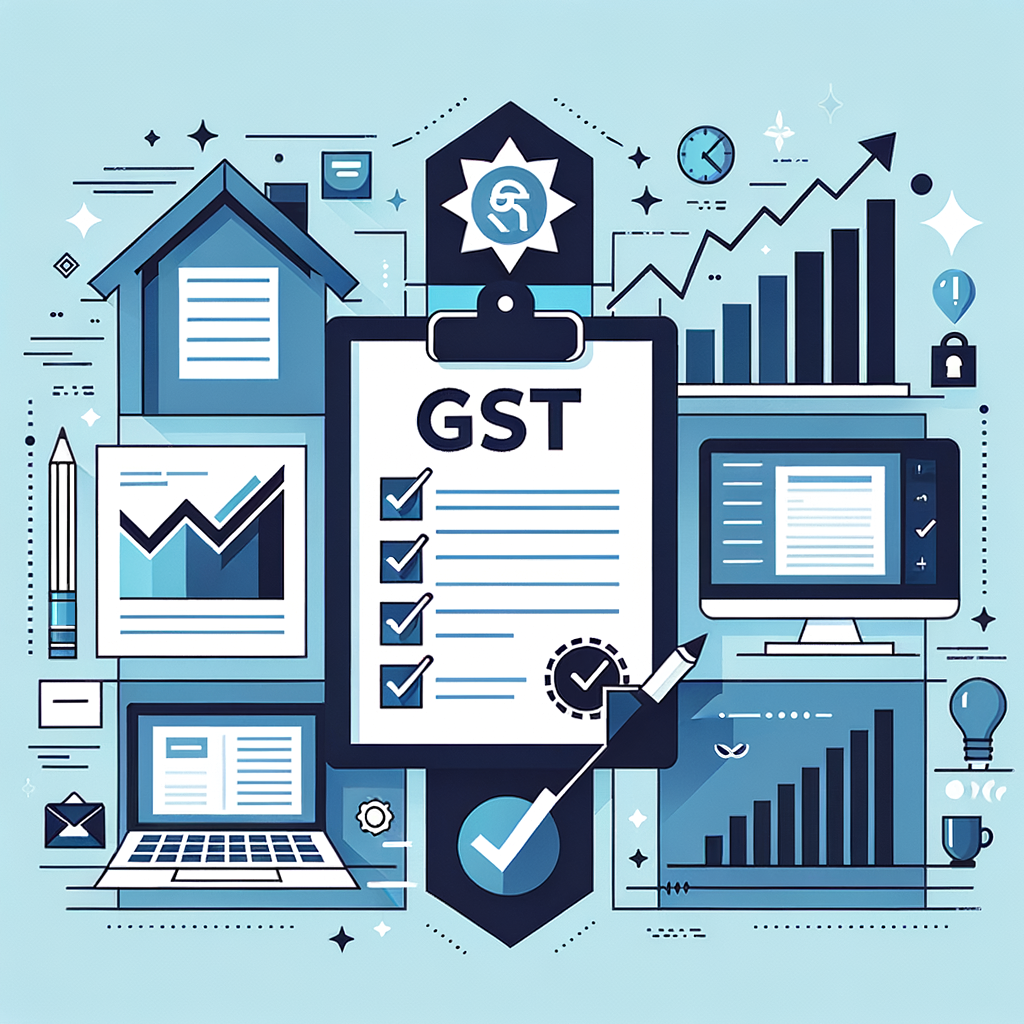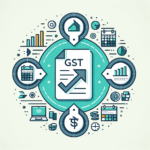A Comprehensive Guide to GST Registration for Businesses in India
Starting a new business is an exciting journey, but it often comes with the challenge of navigating complex legal and tax formalities. For any entrepreneur in India, understanding and completing the GST registration is a foundational step toward building a legitimate and compliant enterprise. This is not merely a box-ticking exercise; proper registration is the gateway to unlocking critical benefits like the Input Tax Credit (ITC), expanding your business across state lines, and building unshakable credibility with clients and vendors. This article serves as a complete guide to GST registration India, designed to demystify the entire process and empower small business owners, freelancers, and new entrepreneurs to take this crucial step with confidence.
What is GST and Why is it Important for Your Business?
Before diving into the registration process, it’s essential to grasp what GST is and the pivotal role it plays in the Indian economy. Understanding its structure will clarify why compliance is so beneficial for your business’s long-term health and growth.
Understanding the Goods and Services Tax (GST)
The Goods and Services Tax (GST) is a single, destination-based indirect tax that revolutionized India’s tax landscape when it was introduced in 2017. It replaced a multitude of complex central and state taxes, such as Value Added Tax (VAT), Service Tax, Central Excise Duty, and Octroi. The primary purpose of GST was to streamline the indirect tax system, eliminate the cascading effect of taxes (tax on tax), and create a unified national market. For businesses, this means a simpler tax structure, improved logistical efficiency, and a more transparent way of managing tax obligations, ultimately making it easier to do business across the country.
The Three Pillars of GST: CGST, SGST, and IGST
GST is structured into three main components, and the one applicable to your transaction depends on where the sale takes place. Understanding these is crucial for issuing correct invoices and filing accurate returns.
- CGST (Central GST): This tax is collected by the Central Government on an intra-state supply of goods or services. An intra-state supply is when the location of the supplier and the place of supply are in the same state.
- SGST (State GST): This tax is collected by the State Government on the same intra-state supply. When you sell within your state, your invoice will show both CGST and SGST applied to the taxable value.
- IGST (Integrated GST): This tax is collected by the Central Government on all inter-state supplies of goods or services and on imports. An inter-state supply is when the supplier is in one state and the place of supply is in another.
Example: If a business in Maharashtra sells goods worth ₹10,000 to a customer also in Maharashtra (intra-state), the invoice will have CGST (e.g., 9%) and SGST (e.g., 9%) added. However, if the same business sells those goods to a customer in Karnataka (inter-state), the invoice will have only IGST (e.g., 18%) added.
Who Needs GST Registration? Eligibility and Thresholds
One of the most common questions from new business owners is, “Do I actually need to register for GST?” The answer depends on your business’s turnover, the nature of your supplies, and where you operate. Let’s break down the rules for mandatory and voluntary registration.
Turnover-Based Mandatory Registration
The primary criterion for mandatory GST registration is your aggregate annual turnover. This includes the total value of all taxable supplies, exempt supplies, exports, and inter-state supplies under the same PAN. The government has set different thresholds for suppliers of goods and services.
- For Suppliers of Goods: The threshold for mandatory registration is an aggregate turnover of ₹40 Lakhs in a financial year.
- For Suppliers of Services: The threshold is lower, at an aggregate turnover of ₹20 Lakhs in a financial year.
It’s important to note that for certain North-Eastern and Special Category States (like Sikkim, Arunachal Pradesh, Meghalaya, Manipur, Mizoram, Nagaland, and Tripura), the turnover threshold is reduced to ₹20 Lakhs for suppliers of goods and ₹10 Lakhs for suppliers of services. These GST registration requirements for businesses India are designed to ensure broad compliance across different scales of business.
Compulsory GST Registration (Regardless of Turnover)
In some specific cases, a business must register for GST from day one, irrespective of its annual turnover. If your business falls into any of the following categories, you need to complete the registration process before commencing operations.
- Inter-State Suppliers: Any person making a taxable supply of goods or services from one state to another.
- E-commerce Operators and Sellers: Businesses that sell goods or services through an e-commerce platform (like Amazon, Flipkart, etc.), as well as the e-commerce aggregators themselves.
- Casual Taxable Persons: Individuals who occasionally undertake transactions involving the supply of goods or services in a state where they do not have a fixed place of business.
- Non-Resident Taxable Persons: Any non-resident individual or business supplying goods or services to recipients in India.
- Businesses Paying Tax under Reverse Charge Mechanism (RCM): When a registered business is required to pay tax on behalf of an unregistered supplier for specified goods or services.
The Benefits of Voluntary GST Registration
Even if your turnover is below the mandatory threshold, you can opt for voluntary GST registration. While it brings compliance responsibilities like timely filing of returns, the strategic advantages often outweigh the effort, especially for businesses with growth ambitions.
- Claim Input Tax Credit (ITC): This is the most significant benefit. As a registered business, you can claim ITC on the GST paid on your business purchases (like raw materials, office supplies, and professional services). This credit reduces your final tax liability, lowering your costs and improving profitability. To fully leverage this, it’s essential to understand the Conditions and Time Limits for Availing ITC under Section 16 of the CGST Act.
- Conduct Inter-State Business Legally: Without a GSTIN, you cannot legally sell goods or services to customers outside your state. Registration opens up the entire Indian market to your business.
- Enhance Business Credibility: A GST Identification Number (GSTIN) signals that your business is legitimate and compliant. Many large corporations and B2B clients will only work with GST-registered vendors to ensure they can claim ITC on their purchases.
- Easily Register on E-commerce Platforms: To sell on major e-commerce websites, having a GSTIN is almost always a mandatory requirement.
The Step-by-Step GST Registration India Process (Online)
Now that you’ve determined your eligibility, it’s time to tackle the core of this guide: how to register for GST in India. The good news is that the entire process is online, paperless, and can be completed through the official Government GST Portal. This step-by-step GST registration India guide will walk you through each stage.
Step 1: Prepare Your Documents
Before you begin the online application, gathering all the necessary documents will make the process smooth and quick. Delays often happen due to incomplete or incorrect paperwork. Here is a checklist of the essential GST registration requirements for businesses India:
- Identity and Address Proof:
- PAN Card of the business or proprietor.
- Aadhaar Card of the proprietor, partners, or directors.
- Photograph of the proprietor, partners, or authorized signatory (in JPEG format, max size 100 KB).
- Business Registration Proof:
- For a Partnership Firm: Partnership Deed.
- For a Company or LLP: Certificate of Incorporation issued by the Ministry of Corporate Affairs. If you’re starting from scratch, you can follow our How to Register a Company in India: Complete Process & Checklist.
- Business Address Proof:
- Own Premises: A copy of the latest Electricity Bill, Property Tax Receipt, or Municipal Khata copy.
- Rented Premises: A copy of the Rent/Lease Agreement along with a No Objection Certificate (NOC) from the property owner and a copy of their electricity bill.
- Bank Account Details:
- A scanned copy of a cancelled cheque showing the name of the business/proprietor, account number, and IFSC code. Alternatively, you can use the first page of the bank passbook or a recent bank statement.
- Authorization Proof:
- For partnerships and companies, a Letter of Authorization or a Board Resolution appointing an Authorized Signatory is required.
Step 2: Generate Temporary Reference Number (TRN)
The registration process begins with creating a temporary profile on the GST Portal.
- Navigate to the official Government GST Portal.
- Go to Services > Registration > New Registration.
- You will see Part A of Form GST REG-01. Fill in the following details carefully:
- Select “Taxpayer” as the type.
- Choose your State and District.
- Enter the Legal Name of the Business as mentioned on the PAN card.
- Enter the PAN of the business.
- Provide an active Email Address and Mobile Number. These will be used for all future communication and OTP verification.
- Enter the captcha code and click “Proceed.” The portal will verify your PAN, email, and mobile number by sending separate OTPs.
- After successful OTP verification, a Temporary Reference Number (TRN) will be generated and sent to your registered email and mobile. Make a note of this TRN; it is valid for 15 days.
Step 3: Complete the Application using TRN
Now, use the TRN to log back in and complete the main application form.
- Return to the GST Portal homepage.
- Go to Services > Registration > New Registration and this time, select the “Temporary Reference Number (TRN)” option.
- Enter your TRN, the captcha, and click “Proceed.” You will receive an OTP on your registered mobile/email. Enter it to log in.
- You will see your saved application with a status of “Draft.” Click on the “Edit” icon to proceed with Part B of the application.
- The form has several tabs. You need to fill in the details and upload the required documents for each section:
- Business Details: Provide your trade name, constitution of business (e.g., Proprietorship, Partnership), and reason for obtaining registration.
- Promoter/Partner Details: Enter the personal details, identity information, and address of all partners, directors, or the proprietor.
- Authorized Signatory: Designate an authorized signatory who will be responsible for filing returns and managing compliances.
- Principal Place of Business: Enter the full address of your primary business location and upload the address proof.
- Goods and Services Details: Specify the top 5 goods or services you will be supplying. You need to provide their HSN codes (for goods) or SAC codes (for services).
- Bank Accounts: Add the details of your business bank account and upload the supporting proof (cancelled cheque or bank statement).
- State-Specific Information: This is usually not required unless specified by your state.
Step 4: Submit Application with EVC or DSC
Once all details are filled and documents are uploaded, the final step is to verify and submit the application.
- Go to the “Verification” tab, tick the declaration checkbox.
- You must submit the application using one of the following methods:
- DSC (Digital Signature Certificate): This is mandatory for Public Limited Companies, Private Limited Companies, LLPs, and Foreign Companies.
- EVC (Electronic Verification Code): For all other types of businesses, including Proprietorships and Partnerships, the application can be submitted via an OTP sent to the Aadhaar-linked mobile number of the authorized signatory.
- Upon successful submission, an Application Reference Number (ARN) will be generated and sent to your registered email and mobile. You can use this ARN to track the status of your application.
Post-Registration: What’s Next?
Completing the application is a huge milestone, but your journey as a GST-compliant business has just begun. Here’s what happens next and the immediate steps you need to take.
Receiving Your GST Certificate and GSTIN
After you submit your application, a tax officer will review the details and the documents you’ve provided. If everything is in order and no discrepancies are found, your GST registration certificate (Form GST REG-06) will be approved and issued, typically within 3 to 7 working days. You can download this certificate from the GST portal. This certificate will contain your unique 15-digit GSTIN (Goods and Services Tax Identification Number), which is based on your PAN and state code. This GSTIN is your unique identity in the GST ecosystem.
First Compliance Steps
Once you have your GSTIN, you are officially a registered taxpayer. You must immediately adhere to the following rules:
- Display Your Certificate: It is a legal requirement to display your GST registration certificate prominently at your principal place of business and any additional places of business mentioned in the registration.
- Issue GST-Compliant Invoices: All invoices you issue must now be GST-compliant. This means they must include your GSTIN, the customer’s GSTIN (if they are registered), the place of supply, HSN/SAC codes, and a clear breakdown of the CGST, SGST, or IGST charged. For a complete overview, see our guide on Understanding GST Invoicing: A Detailed Guide.
Conclusion
Navigating the world of tax compliance can seem daunting, but it is a non-negotiable part of building a successful and scalable business in India. By following this guide, you can systematically approach each stage of the GST registration process India, from checking your eligibility and gathering the right documents to correctly filling out the online application. Completing your GST registration is the first and most critical step towards becoming a formal, growth-oriented business that can legally operate across the country, work with top-tier clients, and optimize its tax liabilities through Input Tax Credit.
Feeling overwhelmed? The GST registration process can be tricky, with potential pitfalls in documentation and form-filling. At TaxRobo, our experts ensure your application is accurate and filed on time, letting you focus on what you do best—running your business. Contact us today for a hassle-free GST registration experience!
Frequently Asked Questions (FAQs)
1. What is the government fee for GST registration?
Answer: GST registration on the official government portal (gst.gov.in) is completely free of cost. There are no government charges for the application or the issuance of the GSTIN. Professional firms like TaxRobo charge a nominal fee for their expert assistance, which includes document preparation, accurate form submission, and end-to-end handling of the process to ensure a smooth and error-free registration.
2. How long does the entire GST registration process take?
Answer: After you have successfully submitted your application with all the correct documents, the GSTIN and registration certificate are typically issued within 3 to 7 working days. However, this timeline can be extended if the tax officer reviewing your application raises a query or requires additional clarification or documents. A prompt response to such queries is essential to avoid delays.
3. Can I use my home address for GST registration?
Answer: Yes, absolutely. You can register for GST using your residential address as your principal place of business. This is a common practice for freelancers, consultants, and home-based business owners. You will need to provide valid proof of address (like an electricity bill in your name or your family member’s name) and a No Objection Certificate (NOC) from the property owner if the property is not in your name or is rented.
4. What are the penalties for not obtaining GST registration when it’s mandatory?
Answer: Failing to register for GST when you are legally required to do so is a serious offense and can attract heavy penalties. As per the GST Act, the penalty for non-registration is 10% of the tax due or ₹10,000, whichever is higher. In cases of deliberate fraud or tax evasion, the penalties can be much more severe, potentially reaching up to 100% of the tax owed, along with the tax liability itself.



